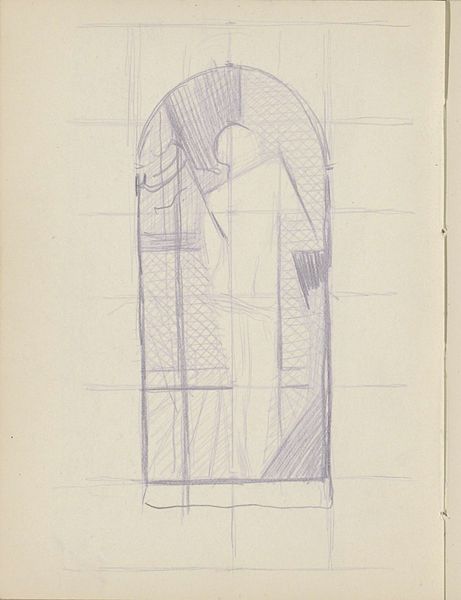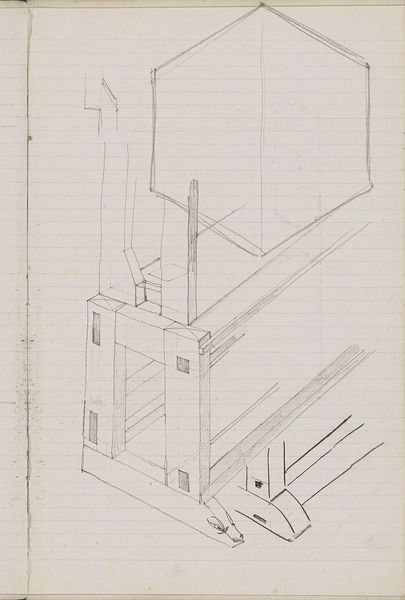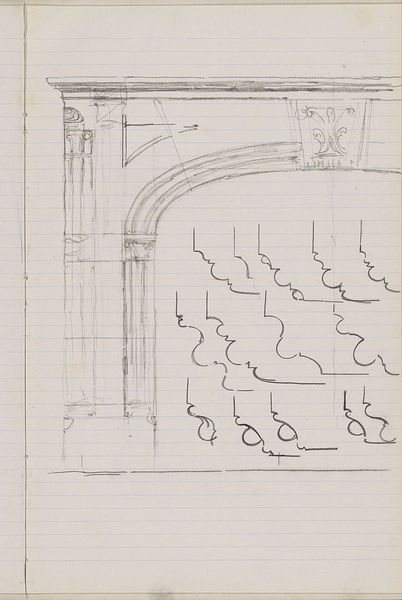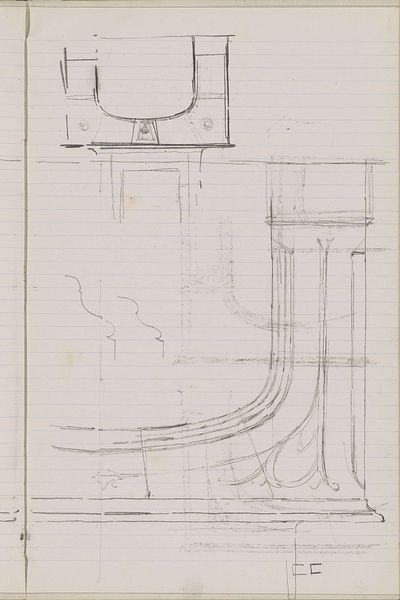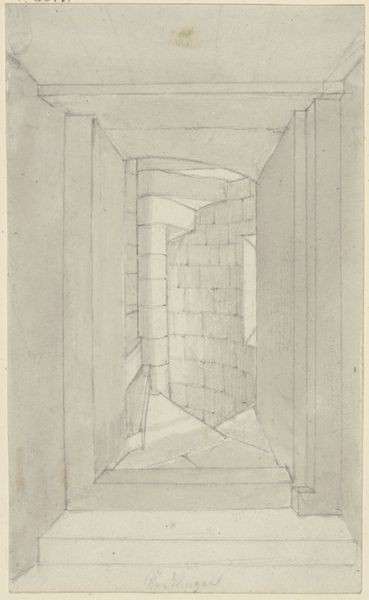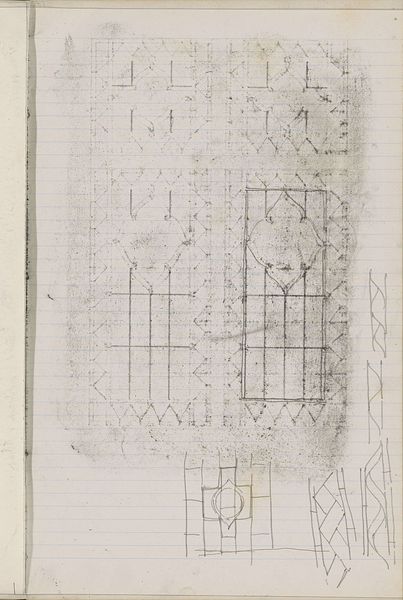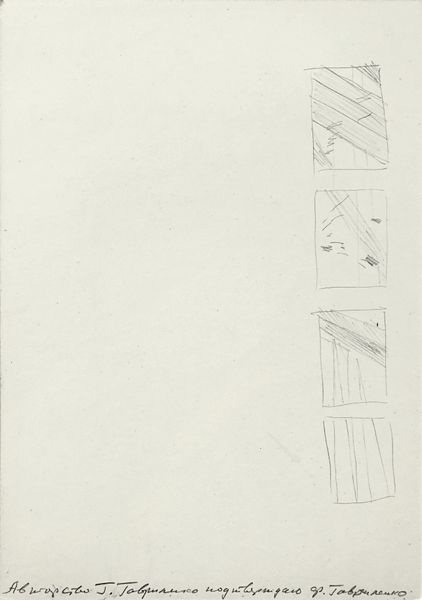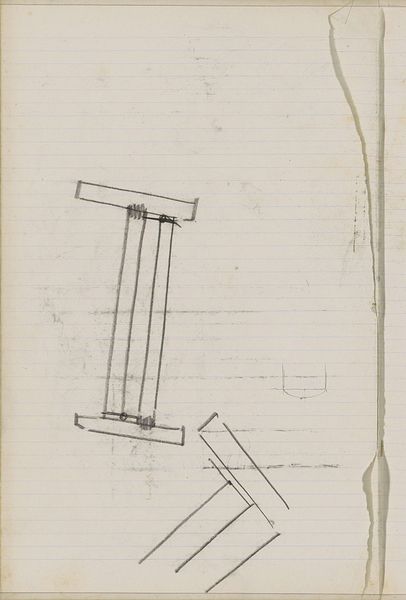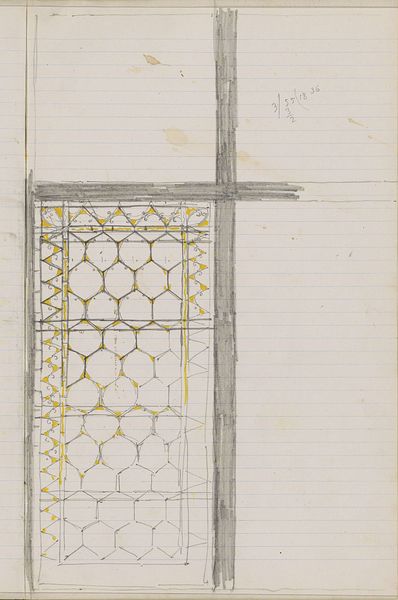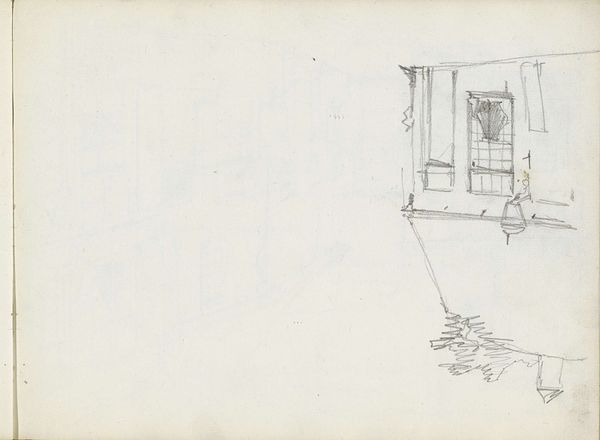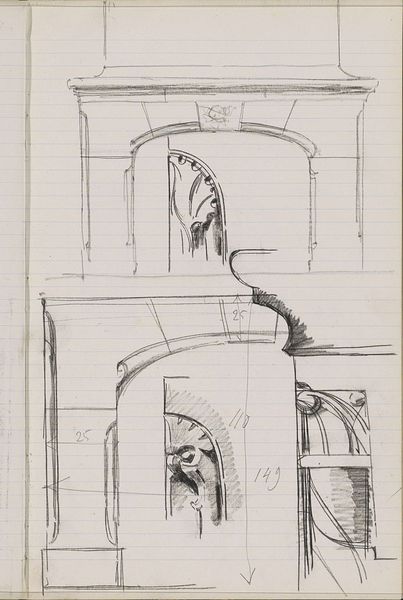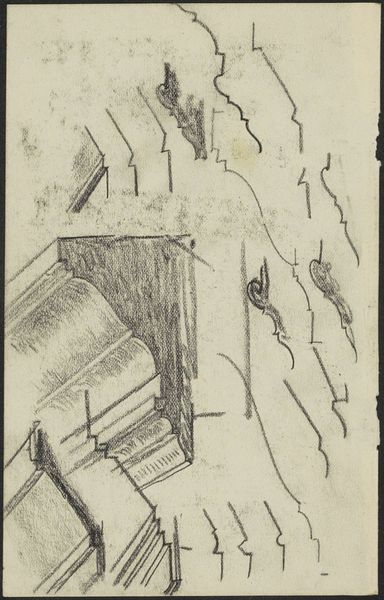
drawing, pencil, architecture
#
drawing
#
etching
#
geometric
#
pencil
#
architectural drawing
#
line
#
architecture
Dimensions: overall: 29.8 x 21.2 cm (11 3/4 x 8 3/8 in.)
Copyright: National Gallery of Art: CC0 1.0
Editor: Here we have Josef Hoffmann’s architectural drawing, "Corner of a Room with Window," created with pencil and etching. It has a strange sense of depth, almost like you're looking into a narrow tunnel instead of a room. What do you see in this piece? Curator: It's tempting to simply see an architectural drawing, but it offers an interesting insight into power dynamics. Look at the oppressive narrowing of the space; does it invite you in, or does it feel… controlling? Editor: I hadn’t thought about it that way. I guess I assumed it was just an aesthetic choice, a cool design. Curator: Perhaps. But consider the era. Hoffmann, a prominent figure in the Wiener Werkstätte, designed for an elite clientele. The compression of space might reflect a desire for exclusivity, controlling who and what enters a domestic sphere. The Werkstätte often employed women in subordinate roles. How does that add another layer to your perspective? Editor: Wow, I hadn't considered gender. The restricted space could represent the limited roles prescribed to women during that time, literally cornered within domestic confines. Curator: Exactly! And the window, a potential symbol of freedom and the outside world, is heavily draped, obscured. It’s less a portal and more of a carefully controlled view. Editor: So even a simple drawing of a room can tell a story about social control and gender. Curator: Precisely. By examining the intent, production and potential impact, we uncover hidden layers of meaning, making art deeply relevant to our current struggles for equity. Editor: This completely changed how I understand architectural drawings and their connections to social history. Curator: And hopefully, it will also inform how we engage with other artworks as reflections of both conscious and unconscious power dynamics within society.
Comments
No comments
Be the first to comment and join the conversation on the ultimate creative platform.
